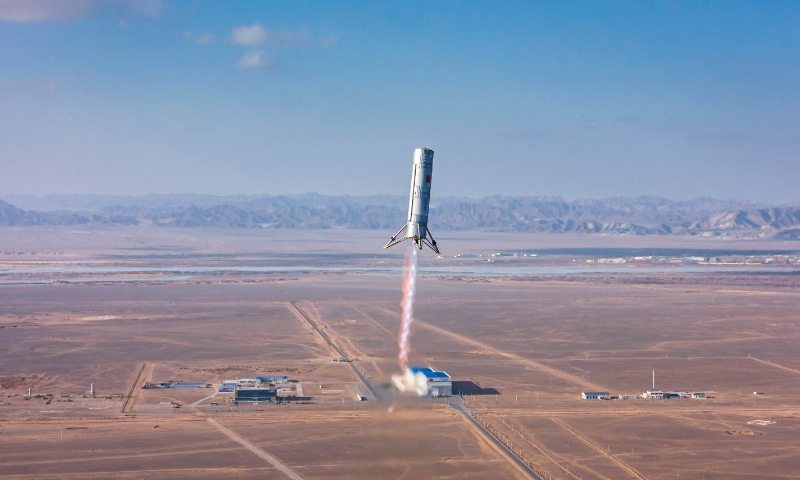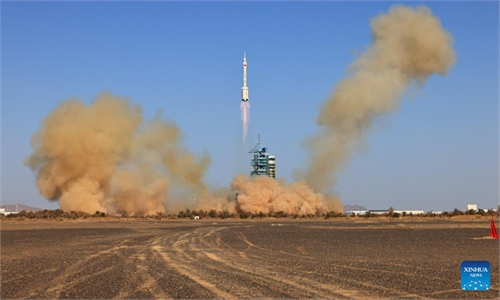Private aerospace firms inspired by Government Work Report, pledge to foster new quality productive forces

The VTVL-1 test rocket Photo: Courtesy of LandSpace
China's commercial aerospace enterprises were inspired as the Government Work Report vowed to step up the development of commercial spaceflight to foster new growth engines.
Developing commercial spaceflight was listed among key areas for development of emerging industries in the Government Work Report, which was mentioned again following the Central Economic Work Conference held in December 2023.
Industry insiders said the Government Work Report underlines the importance and strategic position of the commercial spaceflight industry and builds a foundation for potential policy support for fostering new quality productive forces.
Zhang Changwu, founder and CEO of Chinese private aerospace firm LandSpace, told the Global Times that China's commercial aerospace sector is at a stage of vigorous development, and overall policies, funds, talent and other factors are converging toward this industry.
From the industry's perspective, competition and opportunities coexist. In the fields of rockets, satellites and the corresponding downstream applications, the degree of commercialization varies, but many market participants have emerged, Zhang said.
The development of commercial aerospace has opened a major window, which determines that at this stage, the industry and enterprises need to be more calm and pragmatic, Zhang said, adding that the nation has systematic guidance and guarantees for commercial aerospace from the policy and resource levels.
In regard to the government's pledge to develop new quality productive forces at a faster pace as noted in the Government Work Report, Xia Dongkun, vice president of the Beijing-based private aerospace enterprise firm Galactic Energy, told the Global Times that developing new productivity in the field of commercial aerospace can effectively promote the continuous innovation and breakthrough of new technologies, promote the improvement and optimization of the commercial aerospace industry chain, and create more development space and opportunities for commercial aerospace enterprises.
Xia called for industry efforts to strengthen innovation and production efficiency to compete with global leading commercial aerospace companies such as SpaceX, generating a force for economic growth.
On January 11, the world's mightiest solid carrier rocket, Gravity-1, developed by Chinese aerospace firm Orienspace, blasted off from a space port in East China's Shandong Province, making the company the sixth commercial aerospace firm in China to have sent a satellite into orbit.
In 2023, domestic private rocket companies made 13 launches and successfully entered orbit 12 times, setting new records in the eight years of China's commercial aerospace development, according to media reports.
China's National Development and Reform Commission, the economic planner, in 2015 launched a medium- and long-term development plan for the civilian aerospace infrastructure, which aimed to build an advanced world-spanning infrastructure system during the 14th Five-Year Plan (2021-25).
Since 2015, the size of China's commercial aerospace market has quickly expanded. Data from analysis organization iiMedia Research Institute showed that the market is expected to reach 2.3 trillion yuan ($319.47 billion) in 2024 from 376.42 billion yuan in 2015.
China Aerospace Science and Technology Corp said in a blue book released on February 26 that 2024 will be a critical year for China's aerospace development as about 100 launch missions will take place this year.
Also, China's first commercial aerospace launch site in South China's Hainan Province is expected to host its first rocket launch in the first half of 2024.


